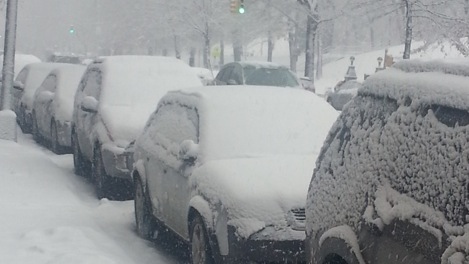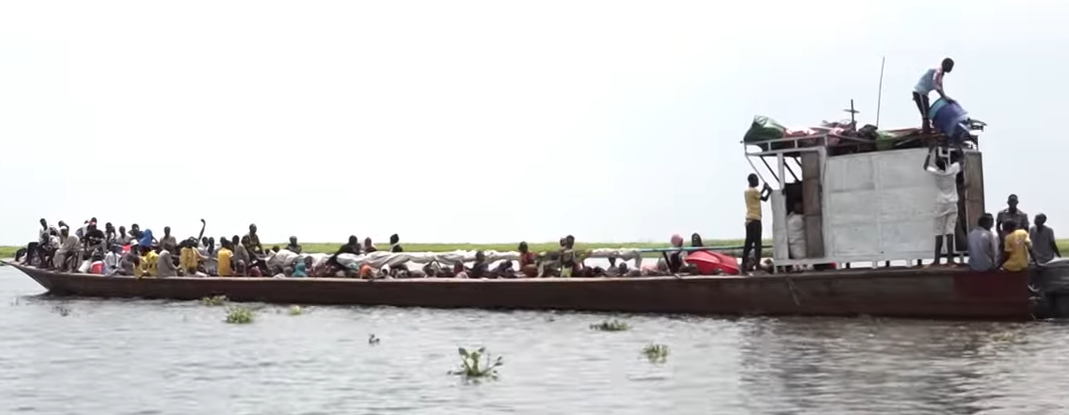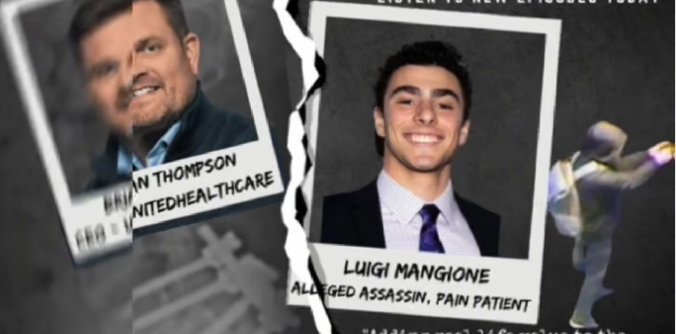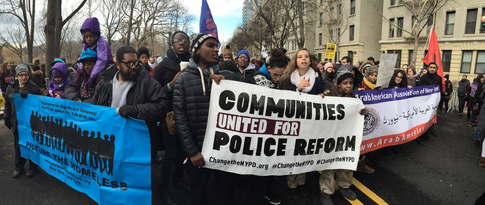A Harlem, New York City street today showing parked cars. Photo: The Black Star News
(Transcript of Mayor de Blasio’s News conference with reporters today).
Question: Did you – Mr. Mayor, did you in Brooklyn – did you measure [inaudible] when the city has a snowstorm, or just because the last snowstorm, the response was not good [inaudible]?
Mayor: I’m going to give my answer while looking at the First Deputy Mayor, who was deeply involved in arranging this. So, if at any time you want to add to my insights – or you can even initiate, if you’d like – but I will – I think these are reforms that will help us on an ongoing basis. I think we learned quickly that there were some things that could be done better. Look, every new administration has an opportunity to put a fresh set of eyes on the situation.
And we felt that there were some things that could be better coordinated. We felt there were some decisions that needed to be made more aggressively and early. And I think, in this process, we’ve created some stronger protocols. Also, the feedback loop is crucial here. I always talked about the experience of the 2010 storm. I don’t think the City of New York, at the time, had the kind of information flowing from the community level it needed to. I don’t think the City of New York was communicating with neighborhoods the way it could. Now, a reform in that has been Plow NYC. And we’re – we’re happy about that, and we’re also going to make sure assiduously that Plow NYC has functioning equipment, so we give people very accurate readings on what’s going on.
But we’re also trying to use social media more effectively to constantly update people. And we have great partners, by the way, in the local elected officials and community boards that want to be a part of that, and are helping to get us real-time reports on places where there’s problems, but also update people on improved responses and specific problems that are being addressed. So I think you’re going to see a lot more give and take, which we welcome, but some of these are about a coordination between agencies that bluntly just weren’t happening as well as it could. And everyone’s willing to do it, but there had to be some leadership. And I want to commend the First Deputy Mayor and the Director of Operations for helping to get people more on the same page. And I think now, we have a much stronger construct to respond with. Marcia?
Question: Mr. Mayor, CBS 2 has received numerous calls and complaints in the West Brighton section of Staten Island. Numbers of car accidents, streets have not been plowed [inaudible]. There are hospitals on each end of (?), apparently. The streets that are plowed right now, the complaints are, that they haven’t been [inaudible]. The question is, what will you do about it and also, there are – there are reports that the fire department might consider closing some of those streets because they’re hazardous. I wonder if you, or your fire commissioner, could comment?
Mayor: Let me let Commissioner Doherty and Commissioner Cassano speak to both. Let me just say, I would — I just came from the Sanitation Department Operation Center. Which, I have to say, is an extraordinary place, in that there is constant, direct views of different key points around the city with the cameras – in addition, of course, to the plow tracker methodology. We looked carefully at Staten Island, given some of the concerns that I had heard previously, given the concerns I heard yesterday from the elected officials. I saw a number of real-time views of Staten Island, and I thought, in general, there was some good work being doing.
But let’s clarify, that’s on the primary roads. I want to make this point. I am learning about snow removal more than I ever expected to. I hope to share my knowledge with you. The first focus is on primary roads. And it has to be on primary roads. That is how everyone gets around, especially coming into a morning rush hour. That is how we keep the pathways to our hospitals open and for emergency vehicles. So, in the beginning of a storm – and I’m going to use my own words commissioner, and you can correct me as an expert. But in the beginning of a storm, the sanitation department has to over-focus on the primary roads. If we can’t get the primary roads to be very strong, nothing else works. So a lot of energy in the first hours of the storm went to the primary roads. Clearly, in many parts of our city, people are concerned about secondary and tertiary roads. I don’t blame them. I just want them to understand that our first use of the equipment is to make sure the main thoroughfares are open in every borough, and then we work from there to go deeper. But we will definitely look immediately at the concerns you’re raising about Staten Island and get an update to you and to the people of Staten Island what we’re doing to improve the situation. Let me get Commissioner Doherty to come up and then Commissioner Cassano.
Commissioner John Doherty, Sanitation: I think the Mayor pointed out what we’re doing over there. Some of the streets up there are hilly and that – this piece of Bart Avenue they said – they’re probably slippery. I don’t know exactly what time the people complained about that and – What time?
Question: One o’clock.
Doherty: Well I would – OK, so we’re – we’re working in the area. We’re working in the area. I would assume Bart Avenue is done. I don’t know exactly what’s going on over there. We’re going to look at our GPS to see what time it was done. But we’re continuing to salt and plow, and snow is continuing to come down, so it’s a never-ending process to keep going back over these roadways.
Question: Is Bart Avenue [inaudible]?
Doherty: Well, any time you’re going to [inaudible] you’re probably going to have a little slipperiness. And there is – there is a – there’s St. Vincent’s hospital down at one end down there. That’s considered the primary area right off the bat. There may be some streets in and off that that have to be plowed yet. That grade is secondary streets, as the mayor pointed out. But we’re looking at that, and we’re continually going through the primary streets.
Question: Well, is Bart Avenue a primary street?
Doherty: I believe – I believe it is. I would have to look, but I believe it is. At least down by the hospital, it is, definitely.
Commissioner Sal Cassano, Fire Department: You know Marcia, the – all of West Brighton is very hilly. Now, we wouldn’t shut any streets without conferring with the NYPD. The only reason why we would even shut a street is we had a car accident; we have to clear the car accident. So it hasn’t been brought to my attention yet that we had to reach out to the PD to shut streets. Because if we shut a street, it has a lot of ripple effects. We would shut it only to remove the car if that was the case.
Mayor: OK, yes?
Question: How much last time were cars on the road a problem [inaudible] to snow removal. And if they were a big problem-
Mayor: What did you say? I’m sorry, how much less time? [inaudible]
Question: How much of a problem were cars being on the road when really they shouldn’t be? Folks driving last time? [inaudible] using mass transit?
Mayor: I’m going – I’m going to go a little bit the other way around. The first storm, New Yorkers did an exemplary job of getting off the streets in the night. And that really opened up the possibilities for sanitation to get in there immediately. That’s part of why the response to the first storm was so strong. People really heeded the call. The second storm, I think as the evening wore on, people did stay off the streets more and more. The problem was, the storm hit before the evening rush hour. So it really – in that way – and it sped up, as everyone remembers – for a long time, we were getting a National Weather Service report of 6-10 inches. And then, I remember very vividly being on the phone with the National Weather Service when that became 10-14 inches. And it was like – turned on a dime. So that storm hit surprisingly fast in the hours leading up to rush hour. So I think that was the central, strategic challenge. Tonight, if people get off the streets, it’s going to allow us to rebound from the storm much more effectively, much more quickly.
Question: There was no indication last time that placement of traffic agents being taken out of the Upper East Side had some issue with that, that they should be [inaudible]
Mayor: Well, let me answer it in two ways. First, the view we take on the – the way we need to both deploy our traffic agents and protect them under certain circumstances. This storm, obviously, you can see the differences between this storm and last storm. It’s a lot warmer, you don’t have the wind situation, you have proportionally less iciness on the roads. You don’t have the blowing snow, so you don’t have the visibility challenges. We felt, last time, that there was a real danger to a lot of our traffic agents if they didn’t have equipment with them, a vehicle with them to provide some indication of where they were, that literally motorists wouldn’t be able to see them because of the swirling snow and the visibility issues. This time, I think we have a much more favorable context, so we’ll have traffic agents out in a number of locations, unless at any given point we think that there might be a life-threatening situation for our traffic agents.
The broader point is – I think what we learned from our initial review, and we’re still – we’re still working on it. But the initial review pointed out that we had a series of things happen on the Upper East Side. It was not any one, specific, single indicator. It was – to some extent, what happened with the speed of the storm, to some extent, what happened with buses that got stalled, to some extent, what happened with the Queensboro Bridge situation. A lot of different pieces contributed, so I don’t think the traffic agent piece was the – at all essential. I think there were many deeper root causes. But the good news is: we’ve tried to get ahead of a lot of those root causes this time. And again, we have a more favorable circumstance in which to have traffic agents out there. Sally?
Question: [inaudible] future? I guess not for this storm?
Mayor: Correct.
Question: Is that – is that the Upper East Side or can you-
Mayor: We are – again, I’ll look to Tony and I’ll look to John and Mindy. That’s something that we’ve identified as an area that we think is promising. Again, it was discussed in the previous administration as something we want to look at more deeply and act on hopefully soon. But we’re not ready to make definitive choices about that just yet. We think there may be some ways of doing it better going forward. Yes?
Question: With the improvements that are being put into place, do you expect that you will be touring any neighborhoods like you did with the Upper East Side to express regret for how things happened? Do you think that will have to happen again or do you think they-
Mayor: Well, I don’t speculate. And again, it’s not about regret – it’s about doing things well and showing people that we are hearing their concerns and acting on them. That’s why I went out to Staten Island yesterday to talk through what happened in the previous storm and learn from it. And I thought there was a very, very cooperative attitude from the elected officials and community leaders who want to work more closely with City Hall – and I have to note, in the case of Staten Island, a lot of people have felt over the years, over many administrations, that City Hall was not responsive enough to them.
It was very important to me to say, “We want to do better.” We want to do better in partnership, and I think there was a real spirit of partnership there. So I’m going to judge each and every time – if there’s things I need to see myself, I will certainly make clear to all New Yorkers and all the people who work for the city of New York, if I hear too many complaints about a particular area, it’s a good likelihood I’m coming myself to look at it. But, this is not about looking backward. This is about looking forward to how we can improve the performance each time. Rich-
Question: Mr. Mayor, I guess there are additional police cameras now that are available. So we have any idea how many of those are on our end, and do you think [inaudible] there’s remarkable number of storms that are coming your way-
Mayor: Rich, I think that’s a fair statement. I think you are a keen observer of the human condition. I am surprised by the number of storms. I am surprised I am starting a press conference telling you about the three storms we’ll have this week – but that’s part of life. I have to say – just one second on the days before this storm – thank God the storm waited until after the Super Bowl. We had an extraordinary four or five days in this town.
The City of New York and all of our city agencies performed in an exemplary fashion – I can’t tell you how many compliments I got from people all over the country about how extraordinary our efforts were to prepare for the Super Bowl and then implement the plan. In the category of counting our blessings, I’m sorry we have this storm today. But it’s good that we got the whole Super Bowl done so well before it hit. But I think that in terms of the cameras, we’ve gotten the kind of interagency cooperation that is really going to help us have real time information. So I’m going to look at any combination of Tony, Mindy, Joe, John – who wants to talk about the cameras and the numbers of the cameras or where the cameras are pointed? Anyone? John?
John: We started monitoring the police cameras last night at midnight. I had gone over there last week to talk with the chief and my staff. We looked at them – we said there’s an opportunity here for us to see stuff that we normally don’t see on the department transportation cameras we get. It’s still a learning process. We’re not – I’m not getting enough into the secondary and tertiary streets. Many of those cameras are on primary or busy areas. Some of them are in the secondary. So it’s a learning program. What we’re trying to do with them now is overlap our network of primary, secondary, and tertiary streets with PED so that we can figure out exactly where the cameras are. We’ve seen some reports today. But I think it’s early on. But it does give us another set of eyes out there and that’s what we’re looking for to better judge overall city as much as we can.
Question: Last time [inaudible] Upper East Side [inaudible]
Mayor: Yeah, I think the timing of the storm last time – you looked at the initial reports. It suggested there was time to get some trash removal in first and then convert over to plowing. By definition, that would be the ideal thing to do. If you had time to get trash in and recycling in, you should. You don’t want it collecting on streets. But I think what happened was the storm sped up, and we had much more snow than was expected – more and in an earlier way. So, yes, I think one of the things we concluded is that when you have unpredictable dynamics with a storm, by definition, if the National Weather Service says expect it at 6 AM, that could mean 5 AM, that could mean 4 AM – you’re never 100 percent sure. If they say it’s going to be 10 inches, that can turn into 14 inches really quickly. And so, we wanted to be strategic about it, and we decided to pull back the trash and recycling so we could be fully operational in terms of snow removal from the beginning. So I think that was a good reform. Yes, Josh?
Question: [inaudible] a lot of snow [inaudible] applications of snow removal are a little unrealistic and that maybe people should get over it a little bit and not complain as much? It just seems like – you grew up in the North East, you know that there is-
Mayor: “Snow happens” – is that your phrase?
Question: Yes. [Laughter]
Mayor: Look. You know, this morning, as I said, I was shoveling my house and I think, as any homeowner will tell you, you know, you shovel your walk and you look at your street and it’s normal that people would like to see their street as clear as possible. I think your point that you raised gets to something important. And this is what I’d say to all New Yorkers. First, we have to get the primary streets cleared. That is a matter of public safety. That is a matter of being able to make the basics of this city work. If we think about making sure our rush hours go well, for example, we need those primary streets open. And there’s only so much equipment and so much personnel – even under optimal situations like today where we put everything we had on the table – there’s still a limit on the number of people and the amount of machinery we have available. So I think what I’d say to the people is, I don’t ever expect my fellow New Yorkers to be patient – I don’t think that’s part of our nature or our character – but I do think people should recognize there is a progression.
It’s what Peyton Manning was having problems with last night. Looking at his first receiver, second receiver, third receiver – he couldn’t find any of them. But, for John Doherty and the men and women of the sanitation department, they have to go primary streets first. Then they work toward the secondary. Then they work toward the tertiary. They bring in the outside equipment to help with the tertiary. So it does take a little time. What the people of this city have every right to expect of us, however, is that within the capacity we have, that we do it as effectively and quickly as possible and that we communicate as much as possible to them. Clearly, last time we didn’t do all those things to the best of our ability. The time before, I think we did. So I want to hold a high standard for our performance and then say to people, now be a little patient about how long it takes to cover 6,300 miles of streets. I remind you, the streets of the city are enough to stretch from here to Los Angeles and back and that’s what these 2000 men and women have to cover under adverse conditions and with lots of traffic in the way. So that’s where I’d agree with you – a little patience is called for. Yes?
Question: You certainly had a baptism by snow-
Mayor: Clever phrase, Marcia.
Question: [Inaudible] Lessons learned so far in dealing with this [inaudible] not only as a municipal issue but as a personal issue-
Mayor: Well, let’s talk about it as a municipal issue. You know, my Police Commissioner Bill Bratton always talks about collaboration and how different agencies have to work together. And he’s been a great apostle of that idea. And part of what has made him so effective over the years is he believes in that notion. I believe in it too, fundamentally. I think what we’re seeing here is agencies are starting to find better ways to work together, better ways to communicate.
I think certainly we’re making some decisions in a more strategic fashion because we’re talking to people on the ground. Again, I’m not going to mince words about the fact that I think the previous administration didn’t do that particularly well, and we are adamant about the need to talk to people on the ground, to hear what’s working and what’s not working. And, you know, social media is a great tool in that, as is traditional media that tells us about the situation on Bard Avenue, for example. So the – I think the notion here is, a much faster, better feedback loop, much more collaboration between agencies, much more communication between agencies, and a tighter strategic plan going into battle – that’s what I think we’re learning to do better every day. I’m very proud of the people standing around me – I think they’ve all been doing an incredible job. You know, this has just been rapid fire. They all have day jobs. They’re all supposed to be doing a lot of other things simultaneously, and they have to keep reverting over to storm duty and then coming back and they’ve kept with it. And I think that the politics simply derives from the human reality – people are going to respond if they think things are done well, they’ll respond one way. If they think things are done poorly, they’ll respond another way. And they deserve to see a city government firing on all cylinders and on-the-job getting things done for them. And that’s what we endeavor to do.
Thank you, everyone.







